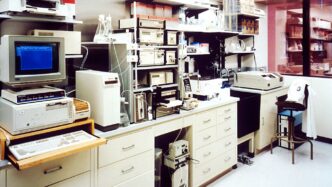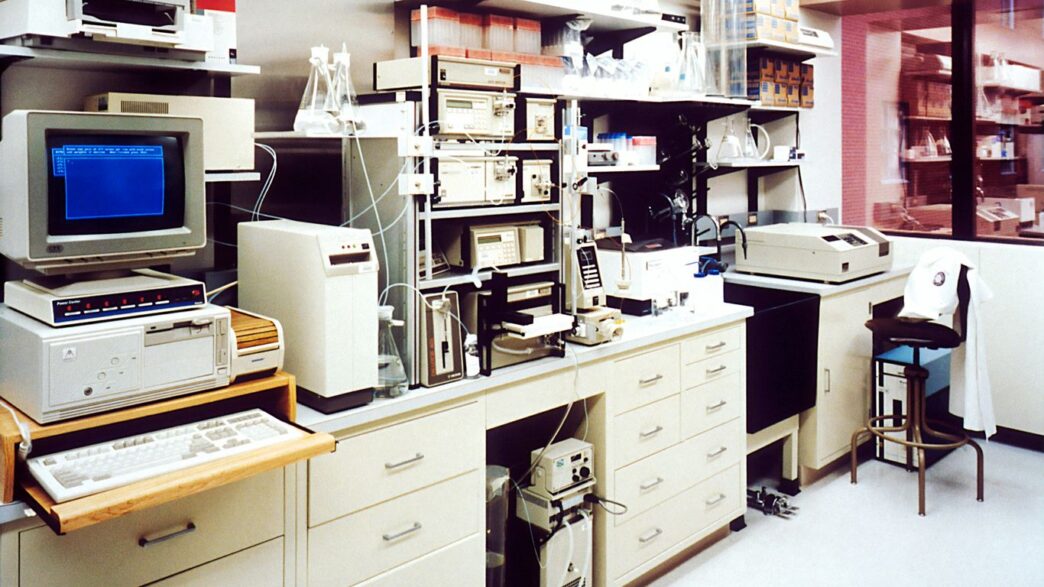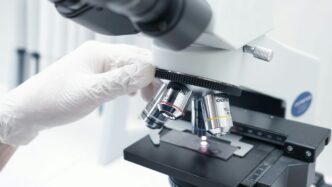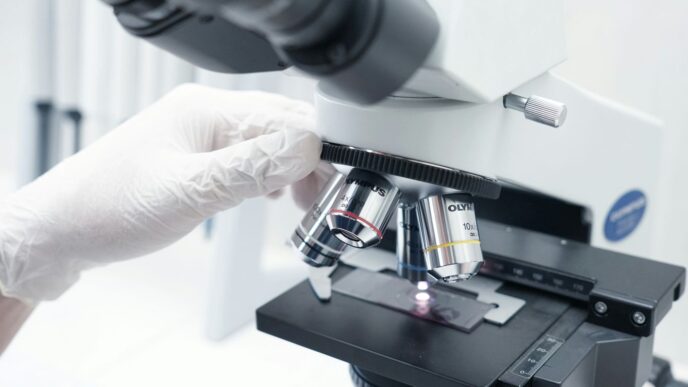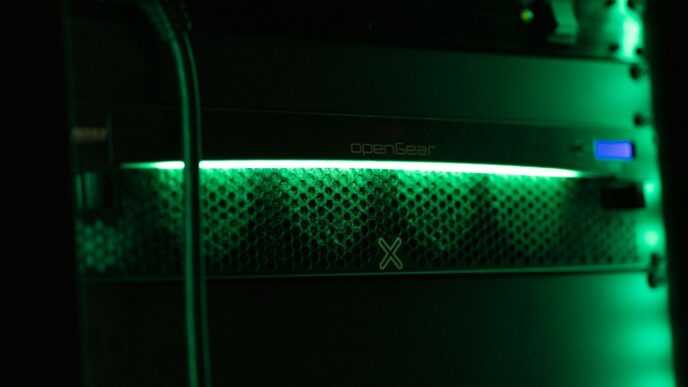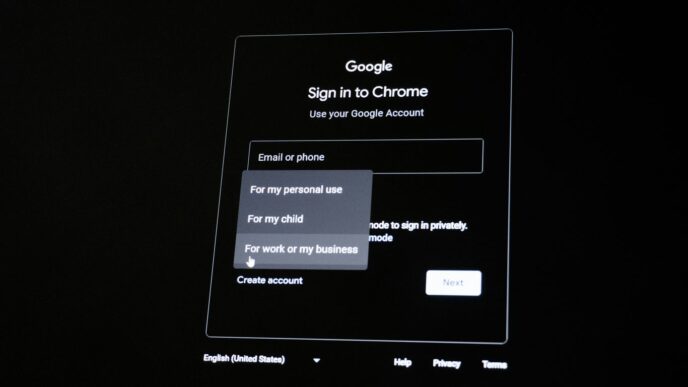Artificial intelligence, or AI, is changing a lot of things in medicine. One of the biggest ways it’s helping is with figuring out what’s wrong with people, which is called medical diagnostics. AI can look at huge amounts of information way faster than a person can. This means it can help doctors find problems earlier, be more sure about their diagnosis, and even help figure out the best way to treat someone. We’re going to look at how AI is changing diagnostics right now, what tools it uses, and what we can expect to see in the future.
Key Takeaways
- AI in medical diagnostics helps doctors find diseases earlier and more accurately by analyzing large amounts of data, like medical images and patient records.
- Machine learning and deep learning are key AI tools used to spot subtle patterns in data that humans might miss, leading to better diagnostic precision.
- AI is already being used to help detect things like cancer, heart conditions, and neurological issues, often improving on traditional methods.
- Challenges such as getting approval, building trust with doctors and patients, and dealing with fairness in algorithms need to be addressed for AI to be widely used.
- The future will likely see AI working alongside doctors as a helpful tool, expanding its role in areas like radiology and pathology to improve patient care and healthcare efficiency.
Transforming Diagnostics With Artificial Intelligence
It feels like artificial intelligence is popping up everywhere these days, and healthcare is no exception. When it comes to figuring out what’s wrong with someone, AI is starting to make some serious waves. Getting a diagnosis right, and getting it fast, is pretty much the bedrock of good medical care. If you miss something, or get it wrong, the consequences can be pretty rough, leading to more problems down the line, not to mention the extra costs. Doctors and nurses are amazing, but they can only look at so much information at once. That’s where AI steps in, with its knack for sifting through mountains of data way faster than any human could.
The Critical Role Of Accurate Diagnoses
Think about it: the diagnosis is the starting point for everything that follows in a patient’s care. It dictates the treatment plan, influences how public health initiatives are rolled out, and even affects how healthcare dollars are spent. When a diagnosis is off the mark, delayed, or completely missed, it’s not just a minor hiccup. We’re talking about potentially serious health issues that could have been managed better, or even avoided, if caught early. It’s a big deal, and it’s an area where even small improvements can make a huge difference for a lot of people.
How AI Enhances Diagnostic Precision
AI’s real superpower in diagnostics is its ability to spot things that might just slip past a human observer. It can look at scans, patient records, and all sorts of other information, finding subtle patterns or clues that are easy to overlook. This isn’t about replacing doctors, but about giving them a super-powered assistant.
Here’s a quick look at how AI is helping:
- Spotting the Unseen: AI can pick out tiny changes in medical images, like MRIs or CT scans, that might signal a problem long before it’s obvious to the naked eye. This early detection is a game-changer for conditions like cancer.
- Connecting the Dots: Machine learning algorithms are really good at finding connections between different pieces of patient data. They might notice a combination of symptoms or lab results that points to a higher risk of something like a stroke or sepsis, often sooner than traditional methods.
- Reducing Unnecessary Worry: For things like cancer screening, AI can help radiologists be more confident in their findings. This means fewer false alarms, which saves patients from the stress and cost of further tests when they aren’t actually needed.
The sheer volume of medical data generated daily is staggering. AI offers a way to make sense of this information overload, turning raw data into actionable insights that can guide medical professionals toward more precise and timely diagnoses.
Leveraging Machine Learning For Deeper Insights
Machine learning, a type of AI, is particularly good at learning from data without being explicitly programmed for every single scenario. In diagnostics, this means AI systems can be trained on thousands, even millions, of patient cases. They learn to identify what a healthy scan looks like versus one with a disease, or what patterns in lab results are associated with specific conditions. This allows them to provide a level of detail and accuracy that’s hard to achieve through manual review alone. It’s like having a seasoned expert who has reviewed more cases than anyone could in a lifetime, available at the click of a button.
Real-World Applications Of AI In Medical Diagnostics

It’s pretty amazing how AI is showing up in so many different parts of medicine these days, especially when it comes to figuring out what’s going on with people’s health. You know, getting the right diagnosis quickly is a big deal. If it’s missed or delayed, things can get complicated, and honestly, sometimes pretty serious. AI is stepping in to help with this, looking at tons of information that would just be impossible for any one person to sort through.
Early Detection Of Cancerous Growths
AI is making a real difference in spotting cancer early. For example, in lung cancer screening, AI programs can look at CT scans and pick out tiny signs that might mean a higher risk of cancer. It’s like having an extra pair of super-powered eyes scanning the images. This early detection is key because it often means treatments can start sooner, which can really change the outcome for patients.
Identifying Cardiovascular Disease Markers
Heart problems are another area where AI is proving its worth. AI can analyze electrocardiogram (ECG) data, finding subtle patterns that might point to heart conditions. It’s not just about detecting obvious issues; AI can sometimes spot early markers for things like hypertrophic cardiomyopathy, a condition that can be hard to catch early on. This kind of analysis helps doctors get a heads-up so they can act before a problem gets worse.
Diagnosing Neurological Conditions
When it comes to the brain and nervous system, AI is also showing promise. It can help in identifying conditions like Parkinson’s disease, ALS, and even early signs of Alzheimer’s. By looking closely at brain scans, AI can detect small changes that might indicate degeneration, sometimes even before a person starts showing clear symptoms. It’s a complex area, and AI’s ability to process detailed imaging is a big help.
Improving Breast Cancer Screening Accuracy
Mammograms are a standard part of breast cancer screening, but sometimes they can lead to false alarms or miss things. AI tools are being used to help radiologists read these images. Studies have shown that AI can help reduce the rate of false positives, meaning fewer people have to go through unnecessary worry and follow-up tests. This not only makes the screening process more efficient but also helps oncologists focus on detecting cancers at their earliest, most treatable stages.
AI’s role in diagnostics isn’t about replacing doctors. It’s more about giving them better tools and more information to make the best decisions for their patients. Think of it as a really smart assistant that can process data at lightning speed and highlight things that might otherwise be overlooked. This partnership between human medical knowledge and AI’s analytical power is what’s really driving progress.
Navigating Challenges In AI Diagnostic Integration
So, getting AI tools into hospitals and clinics isn’t as simple as just plugging them in. There are quite a few bumps in the road that folks are working through. It’s not just about the tech itself, but how it fits into the whole healthcare picture.
Ensuring Regulatory Approval And Market Adoption
Getting a new AI diagnostic tool approved is a big deal. It has to go through a lot of testing to prove it’s safe and works as advertised. Think of it like getting a new medicine approved – it takes time and a mountain of paperwork. Then, even after it’s approved, getting hospitals and doctors to actually start using it can be slow. Sometimes, the market for these tools is still pretty small, or the existing systems in hospitals aren’t set up to easily add new software. This means that even if a tool is great, it might take a while before it’s used by lots of people.
Building Clinician And Patient Trust
Doctors and patients need to feel good about using AI for something as important as a diagnosis. Right now, AI is mostly seen as a helper, a second pair of eyes, not the final decision-maker. Doctors are used to relying on their own judgment and experience, so trusting an algorithm’s suggestion takes some getting used to. Patients also have questions about privacy and whether the AI is truly looking out for their best interests. It’s a process of showing that these tools are reliable and won’t replace the human touch that’s so important in medicine.
Addressing Ethical Concerns And Algorithmic Bias
This is a really important one. If the data used to train an AI system has biases – meaning it doesn’t represent everyone equally – then the AI’s diagnoses might be skewed. For example, if an AI was trained mostly on data from one group of people, it might not work as well for someone from a different background. This could lead to unfairness in healthcare. Plus, there are always worries about patient data being kept private and secure. Making sure AI is fair for everyone and that data is protected is a huge ethical puzzle that needs careful solving.
Here’s a look at some of the hurdles:
- Data Quality and Representation: AI models are only as good as the data they learn from. If the data is incomplete or skewed, the AI’s performance can suffer, especially for underrepresented patient groups.
- Explainability: Sometimes, AI can give an answer, but it’s hard to know exactly how it arrived at that conclusion. Doctors often need to understand the reasoning behind a diagnosis to feel confident in it.
- Integration Costs: Implementing new AI systems can be expensive, requiring updates to existing IT infrastructure and training for staff, which can be a barrier for smaller clinics or hospitals with limited budgets.
The path to widespread AI adoption in diagnostics involves more than just technological advancement. It requires a thoughtful approach to regulation, building confidence among healthcare professionals and the public, and a commitment to ethical development that prioritizes fairness and patient well-being. Without addressing these points, the full potential of AI in medicine may remain out of reach.
It’s a complex puzzle, but one that’s getting a lot of attention because the potential benefits for patients are so big.
The Future Trajectory Of AI In Medical Diagnostics
So, what’s next for AI in figuring out what’s wrong with people? It’s not about replacing doctors anytime soon, that’s for sure. Think of it more like a super-smart assistant, always there to back up the human expert. Right now, and for the next few years at least, AI is really shining as a second opinion. It can look at scans, patient notes, and all sorts of data to give doctors another perspective. This is especially true in areas like radiology, pathology, and dermatology, where AI is already getting pretty good at spotting things that might be easy to miss.
AI As A Supportive Second Opinion
Imagine a doctor looking at a complex scan. AI can process that scan in seconds, highlighting areas that might need a closer look. It’s not making the final call, but it’s pointing out potential issues that a human might overlook, especially when they’re tired or dealing with a heavy caseload. This kind of support can really cut down on mistakes and make sure patients get the right attention faster. It’s like having an extra pair of eyes, but these eyes have seen millions of similar cases.
Expanding Roles In Radiology And Pathology
Radiology and pathology are really leading the charge here. AI is getting incredibly good at analyzing medical images – think X-rays, CT scans, and MRIs. It can spot tiny anomalies that might indicate early-stage disease, like small tumors or subtle changes in tissue. In pathology, AI can help sort through slides, identifying abnormal cells with impressive speed and accuracy. This frees up pathologists to focus on the most challenging cases and complex interpretations.
The Evolving Synergy Between Human Expertise And AI
Ultimately, the goal isn’t for AI to take over. It’s about creating a partnership. Doctors bring their years of experience, their understanding of the patient’s overall health, and their ability to communicate and empathize. AI brings its ability to process massive amounts of data, recognize patterns, and provide objective insights. Together, they can achieve more than either could alone. This combination is what will really change how we diagnose and treat illnesses in the years to come, making healthcare more precise and effective for everyone.
The ongoing development of AI in diagnostics points towards a future where technology and human medical professionals work hand-in-hand. This collaboration aims to improve the speed and accuracy of diagnoses, leading to better patient care and outcomes. It’s a journey of continuous learning and adaptation for both the machines and the people using them.
Innovations Driving AI Diagnostic Advancements
It’s pretty amazing how much AI is changing the way doctors figure out what’s wrong with us. We’re talking about tools that can look at medical images or patient notes and spot things that might be missed otherwise. This isn’t science fiction anymore; it’s happening now, and it’s making a real difference.
Deep Learning for Medical Image Analysis
Think about X-rays, CT scans, or MRIs. These are packed with information, but sometimes the really subtle signs of trouble can be hard to see, even for experienced eyes. Deep learning, a type of AI, is fantastic at sifting through these images. It can be trained on thousands, even millions, of scans to recognize patterns associated with diseases like cancer or early signs of neurological issues. It’s like having a super-powered assistant who never gets tired and can spot the tiniest anomaly.
- Cancer Detection: AI models can identify suspicious spots on mammograms or lung nodules on CT scans that might be too small or faint for a human to notice initially.
- Neurological Disorders: Analyzing brain scans, AI can detect changes related to conditions like Alzheimer’s or Parkinson’s disease earlier than traditional methods.
- Retinal Scans: AI is used to find signs of diabetic retinopathy, a leading cause of blindness, by examining images of the eye.
The sheer volume of medical images generated daily presents a significant challenge for human interpretation alone. AI’s ability to process and analyze these images at scale offers a way to improve efficiency and accuracy in diagnostic workflows.
Natural Language Processing for Clinical Notes
Doctors and nurses write a lot of notes, and these notes contain a wealth of patient history, symptoms, and observations. Natural Language Processing (NLP) allows AI to
Enhancing Patient Outcomes Through AI Diagnostics

When a diagnosis is off, delayed, or just plain missed, it can really mess things up for patients. We’re talking about serious consequences, and sometimes, it’s just a matter of human capacity – doctors can only look at so much information. That’s where AI steps in, acting like a super-powered assistant that can sift through mountains of data way faster than any person could. This ability to process and find subtle patterns is key to making healthcare better for everyone.
AI tools are getting really good at spotting things early. Think about cancer screenings; AI can look at scans and flag tiny changes that might be missed otherwise. This early detection means treatment can start sooner, which usually leads to much better results. It’s not just about finding diseases, though. AI can also help figure out the best way to treat someone. By looking at a patient’s specific health info, AI can suggest treatments that are more likely to work for them, cutting down on trial-and-error and reducing the chances of bad reactions.
Here’s a quick look at how AI is making a difference:
- Catching diseases earlier: AI can spot signs of conditions like cancer or heart problems on scans or other data long before a person might notice symptoms.
- Making treatments more personal: Instead of a one-size-fits-all approach, AI helps doctors pick treatments tailored to your unique body and health history.
- Cutting down on mistakes: By providing a second look or flagging potential issues, AI can help reduce diagnostic errors, which are surprisingly common.
- Speeding things up: Getting a diagnosis faster means starting treatment sooner, which can make a big difference in how well someone recovers.
The goal isn’t to replace doctors, but to give them better tools. Imagine a doctor having an AI assistant that can instantly pull up relevant research, analyze complex scans, and highlight potential risks. This partnership between human smarts and AI processing power is what’s going to lead to better care.
It’s also about making healthcare more efficient. When AI can handle some of the more time-consuming data analysis, doctors and nurses have more time to spend directly with patients. This can lead to a better patient experience overall, with more attention paid to individual needs and concerns. Plus, by reducing errors and speeding up diagnoses, AI can help lower healthcare costs, making quality care more accessible.
Looking Ahead
So, where does all this leave us? AI in medical diagnostics isn’t some far-off sci-fi concept anymore; it’s here, and it’s changing things. We’ve seen how it can spot problems earlier and more accurately than we sometimes can, which is pretty amazing. Of course, it’s not perfect. There are still big questions about privacy, making sure the AI isn’t biased, and getting everyone to trust these new tools. For now, think of AI as a super-smart assistant for doctors, not a replacement. It’s going to help radiologists, pathologists, and others do their jobs better. As the technology gets smarter and we get better at using it, AI will likely play an even bigger role in keeping us all healthier. It’s a partnership between human smarts and computer power, and that’s a good thing for everyone.

